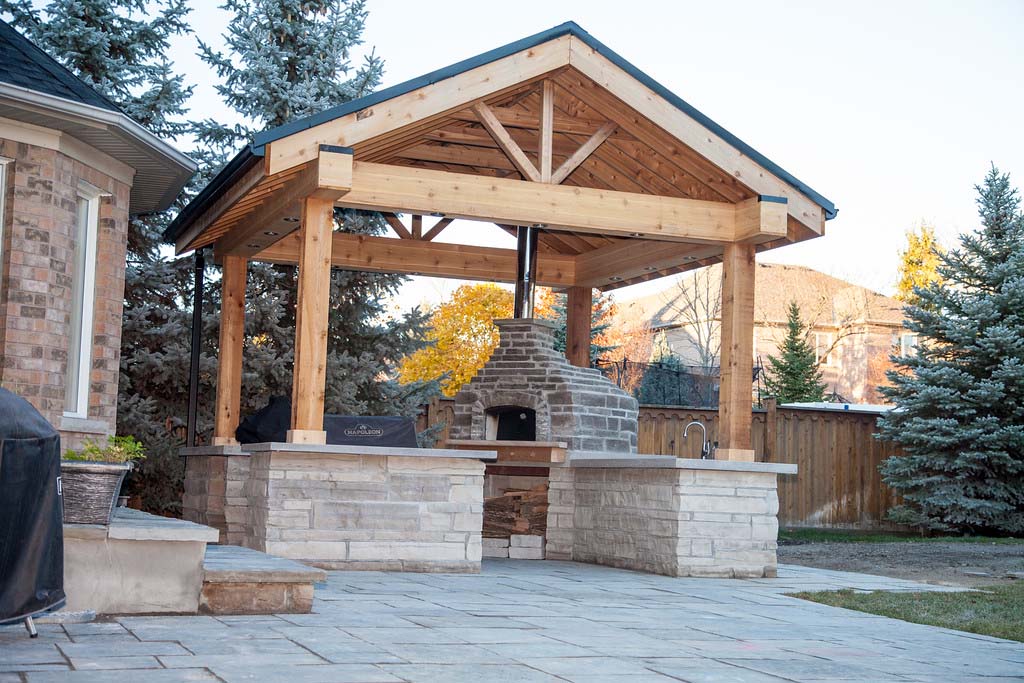
We’ve all seen them—those charming little structures tucked away in gardens, offering a quiet escape from the bustle of daily life. Gazebos, often overlooked in the backyard, are far more than just a decorative feature. These peaceful retreats have a history of sheltering everything from intimate conversations to family gatherings.
But there’s a lot more to a gazebo than meets the eye. They’ve stood the test of time, serving as personal havens or social hubs for many generations. Behind their simple design, these spaces hold memories and stories that have long been forgotten. Whether it’s a place for relaxation or celebration, the humble gazebo continues to quietly make its mark, providing us with much more than just a pretty spot to sit.
What are the historical uses of gazebos as backyard retreats?
Historically, gazebos have served as elegant and functional backyard retreats for centuries, with roots tracing back to ancient civilizations. Their original uses often reflected the cultural values and lifestyles of the time:
- Ancient Egypt and Rome: Gazebos were used as shaded garden pavilions for relaxation and contemplation. Egyptian gardens featured them as places for elite families to enjoy leisure in privacy, while Roman estates included gazebos for entertaining guests and escaping the midday heat.
- Medieval and Renaissance Europe: In these periods, gazebos became symbols of status and refinement. Wealthy landowners incorporated them into ornate gardens as spaces for music, reading, or quiet reflection. They were also commonly used as viewing points to admire the surrounding landscape.
- 18th and 19th Century England and France: Gazebos were embraced as romantic garden features. They were seen as ideal spots for tea, painting, poetry, or intimate conversation, embodying the picturesque style of landscaping that was popular at the time.
- Early American Gardens: Inspired by European designs, gazebos were often built in formal gardens or on estates in colonial America as places to rest, host guests, or enjoy nature.
In each era, gazebos provided a serene retreat—blending beauty, function, and social significance in outdoor living.
How do gazebos influence relaxation and social gatherings?
Gazebos significantly influence both relaxation and social gatherings by creating a dedicated, comfortable space that brings people together while offering a sense of retreat from everyday life.
- Promoting Relaxation: Gazebos provide a shaded, open-air environment that naturally invites calm. Surrounded by nature, they offer a quiet space for reading, meditating, or enjoying coffee. The architectural design encourages a slower pace, shielding you from the elements while immersing you in the outdoors. This unique balance between shelter and openness fosters a peaceful atmosphere ideal for unwinding.
- Enhancing Social Gatherings: As a focal point in a backyard or garden, gazebos create a cozy and inviting setting for entertaining. Whether it’s a family barbecue, birthday celebration, or evening with friends, a gazebo provides structure and ambiance to the gathering. It encourages connection by offering comfortable seating, a central meeting space, and a defined food, music, or conversation area. The sense of intimacy it creates makes every gathering feel special, while the shelter it provides ensures events can continue regardless of the weather.
Gazebos are more than just outdoor structures—they’re spaces designed to nurture relaxation, connection, and meaningful moments with others.
Why are gazebos considered special places for personal reflection?
Gazebos have always held a special place in our hearts as personal sanctuaries, perfect for reflection and relaxation. Their serene, open-air design allows for a unique connection with nature, making them ideal for moments of solitude and contemplation. Here’s why gazebos are often seen as special places for personal reflection:
- Seclusion from the Outside World: A gazebo creates a quiet, secluded space away from the distractions of daily life. It offers a break from the noise and chaos, helping to clear the mind and encourage deep thought. Whether in a busy backyard or a secluded garden, this separation allows for peace and stillness, which are key for self-reflection.
- Surrounded by Nature: Gazebos are often positioned in spots that offer scenic views, whether that’s a garden, lake, or wooded area. Being surrounded by nature has a calming effect, promoting mindfulness and introspection. The sights and sounds of nature can help people reconnect with themselves, allowing for clarity and personal insight.
- Design and Ambiance: The open, airy design of a gazebo, often with soft lighting or simple, comfortable seating, creates an atmosphere of relaxation. This thoughtful design encourages a peaceful state of mind, making it easier to focus on personal thoughts and emotions without external interruptions.
- Flexibility for Different Activities: Gazebos offer the flexibility to engage in various reflective activities like journaling, reading, meditating, or even just sitting quietly. This versatility allows individuals to choose how they want to spend their reflective time.
Gazebos are more than just decorative structures. They serve as personal retreats that foster peace, solitude, and connection with nature. Whether for quiet moments alone or for meditative activities, they provide an ideal setting for self-reflection.
How have gazebos been featured in literature and cultural traditions?
Gazebos have long been symbolic and aesthetic in literature and cultural traditions, often representing beauty, romance, introspection, and social connection. Their unique blend of structure and openness has made them a powerful setting and symbol across cultures and storytelling.
In Literature
- Romantic and Reflective Symbolism: In classic and contemporary novels, gazebos are often portrayed as settings for quiet reflection, heartfelt conversations, or romantic moments. Authors use them to represent serenity, secrecy, or the threshold between nature and civilization. In many stories, pivotal emotional scenes occur in or around a gazebo, highlighting its role as a place of emotional honesty and transformation.
- Victorian and Garden Literature: During the Victorian era, gazebos frequently appeared in garden-focused literature and poetry as symbols of elegance and genteel leisure. They were associated with cultured living, often linked to characters of refinement and introspection.
In Cultural Traditions
- East Asian Pavilions: Similar to gazebos, traditional Chinese and Japanese garden pavilions serve as meditative and aesthetic spaces in cultural and spiritual practices. They often appear in poetry, art, and design as places of harmony and contemplation.
- Western Garden Traditions: In European culture, especially during the 18th and 19th centuries, gazebos (often called follies or pavilions) were common features in landscaped gardens. They were designed for rest and as places for conversation, music, and philosophical discussion—mirroring Enlightenment ideals.
- Weddings and Celebrations: In many cultures, gazebos are used as ceremonial spaces, especially in outdoor weddings. They represent unity, protection, and natural beauty. Their circular or octagonal shapes often symbolize eternity or completeness in spiritual and symbolic traditions.
Gazebos are more than ornamental garden structures—they are deeply embedded in our cultural and literary consciousness as spaces of emotion, beauty, and meaning.
Uncover Meaningful Moments Inside Your Backyard Gazebo Retreat
Our custom-built gazebos are more than just structures—they’re personal sanctuaries where life’s quiet joys unfold. From morning coffee and peaceful reflection to family gatherings and starlit conversations, a gazebo creates a special space for connection and calm.
Designed with craftsmanship and comfort in mind, each gazebo blends beautifully into your landscape while offering shelter, style, and serenity. Let Bull Mountain Outdoor Living & Construction help you create a timeless outdoor escape where lasting memories are made. Contact us today to bring your dream backyard retreat to life!
What Happens Inside a Gazebo? The Forgotten Stories of Backyard Retreats








